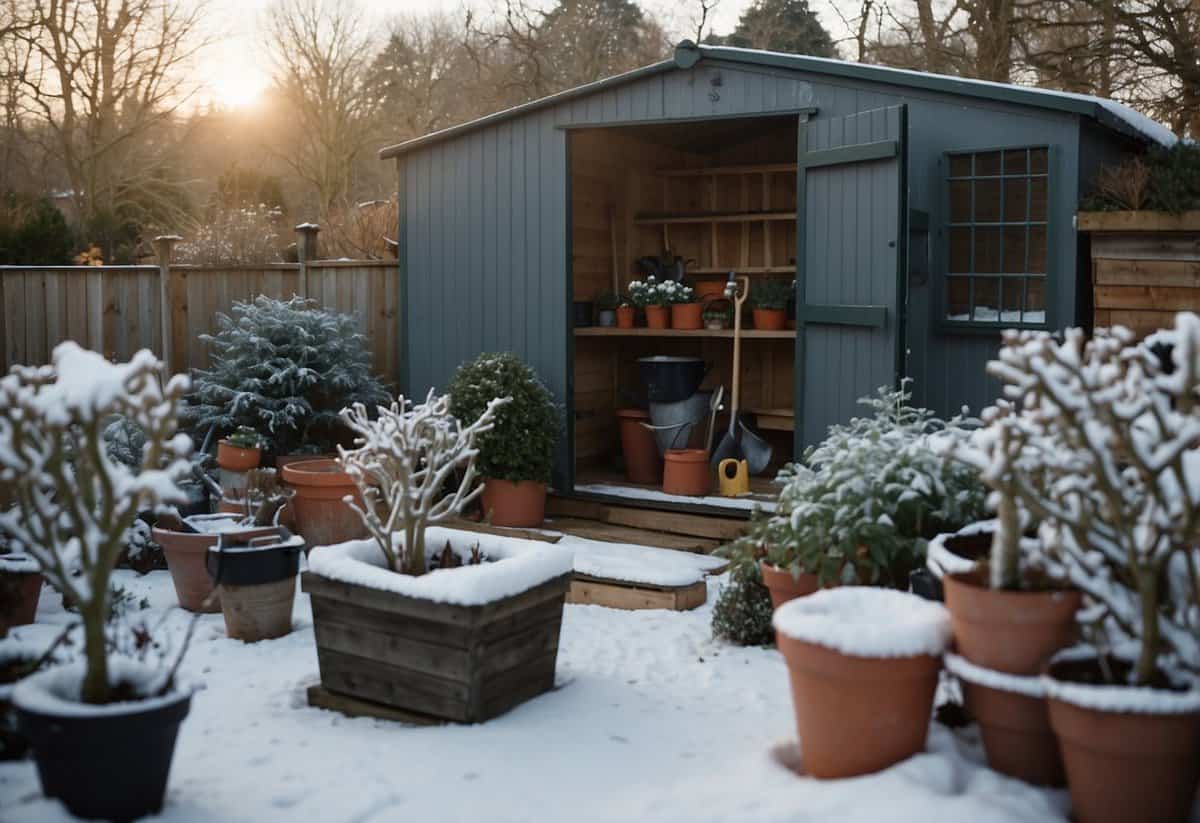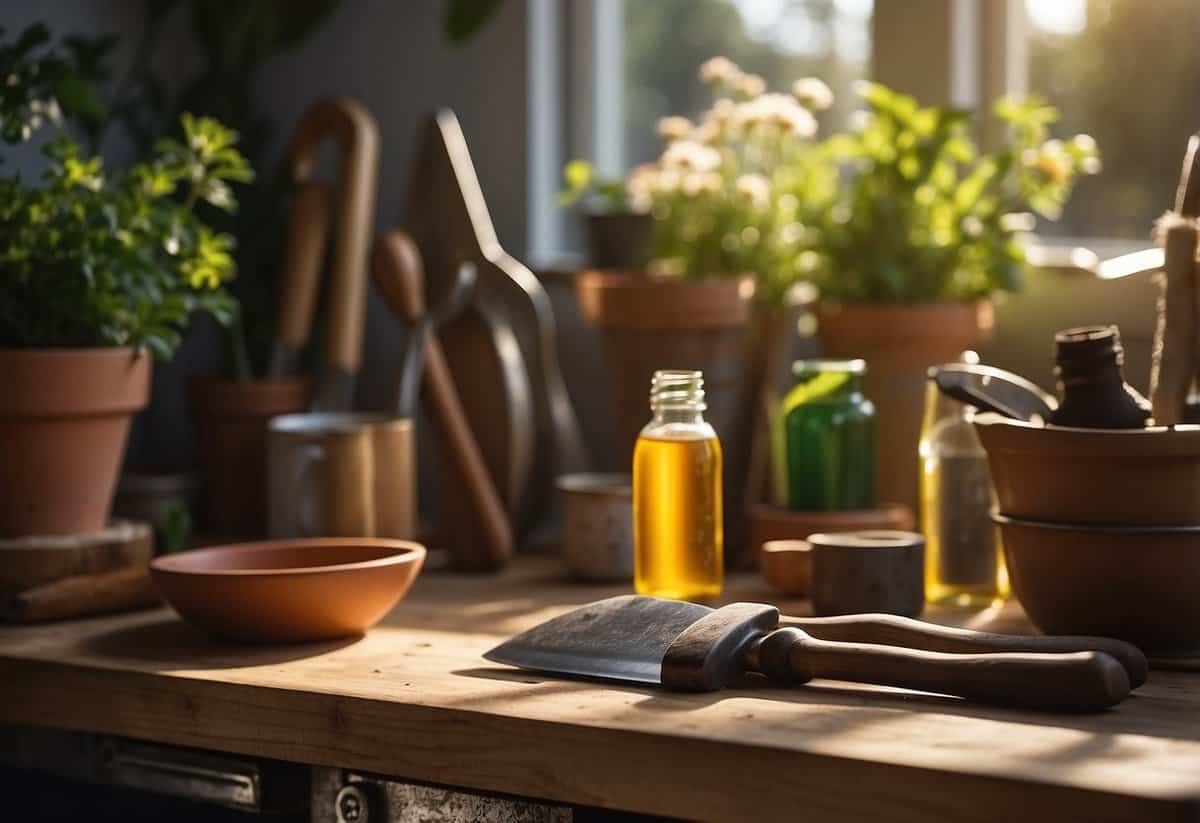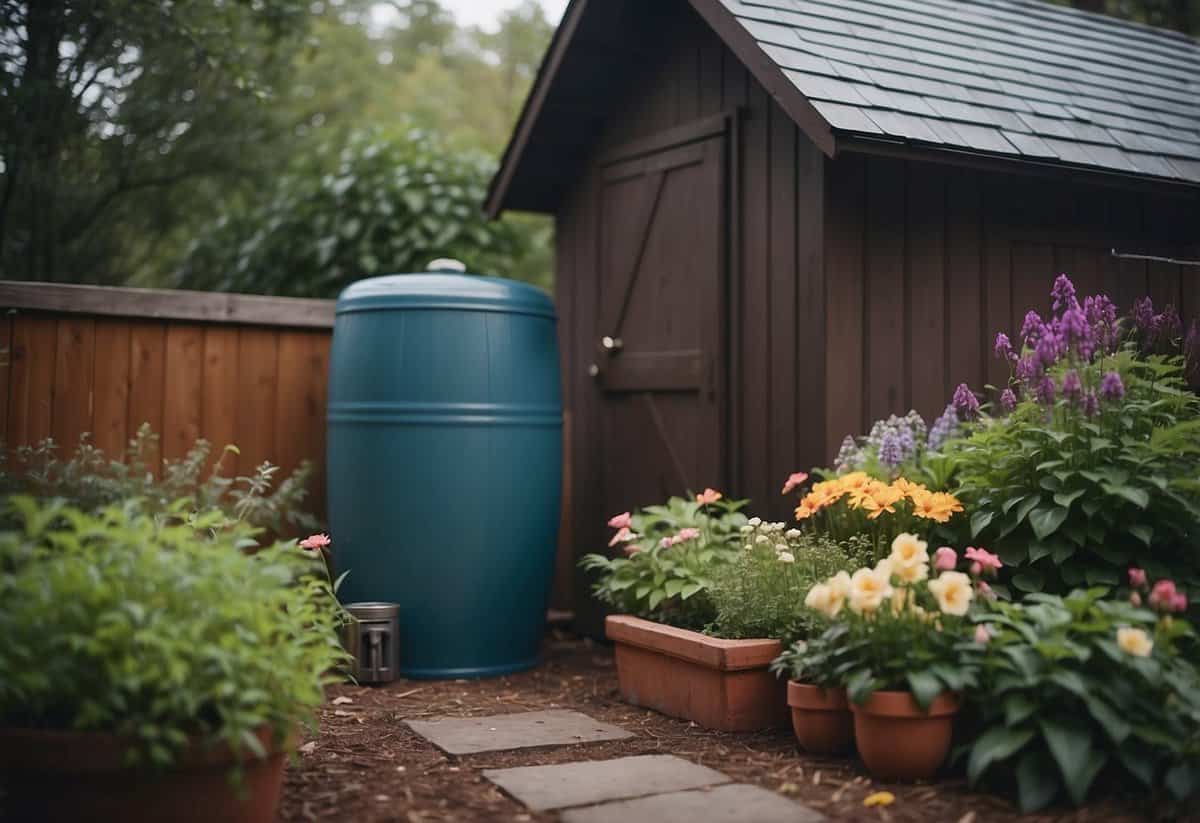January Garden Tips: Keep Your Winter Garden Thriving
Gardening in January might seem challenging, but it’s a great time to prepare and plan for the upcoming seasons. With a few key tasks, you can set the stage for a beautiful and productive garden all year long. Whether you’re a beginner or an experienced gardener, this month offers unique opportunities to get ahead.

What can you do in your garden this January to ensure a bountiful harvest later? From starting seeds indoors to pruning and planning, there are several essential activities to focus on. By taking advantage of this time, you can ensure your garden is healthy and ready for the spring growth spurt.
1) Check soil pH levels

Checking the pH level of your soil is key for healthy plants. The pH scale ranges from 1 (very acidic) to 14 (very alkaline), with 7 being neutral.
One easy way to check soil pH is by using a pH meter. Mix soil with distilled water, let it sit for an hour, then measure with the pH meter.
Another method involves using household items. Add vinegar to soil and see if it fizzes. If it does, the soil is alkaline. More detailed steps can be found here.
2) Prune Rose Bushes

Pruning your rose bushes in January is important to ensure healthy growth. Start by removing any dead, damaged, or diseased branches. This helps the plant focus its energy on new growth.
Next, cut back to just above an outward-facing bud. This encourages the new stems to grow outward instead of inward. Trim at a 45-degree angle to let water run off easily.
Be cautious not to prune too early in the year. Late winter is ideal for most regions. This helps prepare your roses for a successful blooming season. For more tips on pruning, check out this rose pruning guide.
3) Start Onion Seeds Indoors

January is a great time to start onion seeds indoors. Onions take a while to grow, so starting them early gives them a good head start.
Use trays or small pots filled with seed-starting mix. Draw shallow furrows about half an inch deep.
Place the seeds about a quarter-inch apart. If using pots, sprinkle the seeds on top and gently cover with soil. You’ll want to keep the soil moist and use grow lights if possible.
Transplant the seedlings to your garden in early spring when they are about 6-8 inches tall.
4) Clean and oil garden tools

Keeping your garden tools clean and oiled is important for their longevity. First, wash your tools with warm, soapy water and a stiff brush to remove dirt.
Next, disinfect them to kill bacteria and fungi. Soak them in a mix of two cups of chlorine bleach and one gallon of water for 10 minutes. Rinse and dry them thoroughly.
After cleaning, apply a thin layer of light machine oil to the metal parts. This helps to prevent rust. For wooden handles, rub them with linseed oil to keep the wood from cracking.
Store your tools in a dry, secure place. Consider hanging them on a wall to keep them organized and accessible.
Regular maintenance will keep your tools in great shape!
5) Install a rain barrel

Installing a rain barrel can help you save water for your garden. Choose a spot near your downspout to place your barrel. You may need to remove or cut the downspout.
Make sure the rain barrel is level. Use a stand if needed. Attach a spigot to the bottom of the barrel for easy access to the water.
You can follow a detailed guide from HGTV. This small project can make a big impact on your water conservation efforts!
6) Plant Bare-Root Fruit Trees

January is a great month to plant bare-root fruit trees. These trees are sold without soil around their roots and need special care.
First, inspect the roots, trimming any broken parts. Soak the roots in a bucket of water for one to four hours, but not longer.
When planting, dig a hole large enough for the spread-out roots. Make sure the graft union (where the tree was grafted) is above the soil line.
Add some compost to the bottom of the hole to give your tree a nutrient boost.
For more detailed instructions, check out these step-by-step guide and tips.
7) Feed winter veggies

Winter vegetables need extra care to stay healthy in the cold months. Focus on giving them organic nutrients.
Amend the soil with well-decomposed compost or organic fertilizer. This helps plants get the nutrients they need despite the colder weather.
Regularly check if your veggies show signs of nutrient deficiencies. If they do, apply a balanced liquid fertilizer for a quick nutrient boost.
Feeding your winter veggies properly ensures they grow strong and produce great-tasting harvests throughout the season.
8) Protect tender plants with cloches

January can be tough on young plants. Using cloches is a great way to protect them. Cloches can shield your plants from frost and sudden temperature drops.
You can make your own cloches using plastic bottles or glass jars. Simply cut the bottom off and place them over your plants. They act like mini-greenhouses, keeping your plants warm and safe.
Commercial cloches are also available and are easy to use. They come in various sizes and materials to fit your garden’s needs. Keeping your plants protected in winter has never been simpler!
9) Order Seed Catalogs

During January, you can start planning your garden by ordering seed catalogs.
These catalogs offer a wide range of seeds and gardening tips to help you get started.
Consider The Old Farmer’s Almanac, which offers plenty of seed options and useful advice.
Requesting seed catalogs from various companies will give you a good idea of what’s available.
You might like to browse The Garden Glove’s top seed catalogs for 2024 to see some good options.
Ordering early ensures you get the best selection before popular seeds sell out.
10) Start planning spring garden layout

Winter is a great time to begin planning your spring garden layout. Think about what plants you want and where they will grow best.
Consider planting your taller crops like corn or sunflowers at the back, with shorter plants in front.
Using raised beds or containers can help maximize your space and create a beautiful design. To explore some helpful tips, check out this spring garden planning guide.
Use this time to sketch your garden on paper. It helps visualize the layout and makes planting easier when spring arrives.
Preparing Your January Garden

Getting your garden ready during January involves enriching the soil and ensuring your tools are in top shape. Doing these tasks now will help your garden thrive throughout the year.
Soil Enrichment
Begin by improving your soil quality. January is a great time to add compost to your garden beds. Compost adds essential nutrients like nitrogen and phosphorus, which help plants grow strong. Spread a layer of compost, about 2-3 inches thick, over your garden beds.
Mix the compost into the top 6 inches of soil. This ensures the nutrients reach plant roots. You can also add organic fertilizers like bone meal for an extra nutrient boost. Look for fertilizers that are specifically designed for the plants you intend to grow.
Consider doing a soil test to check pH levels and nutrient content. Soil tests provide detailed information that helps you decide which amendments are needed. You can get soil test kits at garden centers or send samples to a lab.
Tool Maintenance
Maintaining your garden tools is critical in January. Start by cleaning and sharpening your tools. Clean tools perform better and last longer. Use soapy water to clean dirt and grime off your tools.
After cleaning, dry the tools completely. Rust can damage tools, so apply a light coat of oil to metal parts to prevent corrosion. For sharpening, garden shears, pruners, and spades will work more efficiently if they have a sharp edge. Use a sharpening stone or file to restore their sharpness.
Check for any damaged or broken parts. Replace any worn-out handles or dull blades. Keeping a log of your tools can help you keep track of maintenance and replacements. This ensures you have everything ready when the planting season begins.
Choosing the Right Plants

January is a great time to start planning your garden. You can focus on planting vegetables that can withstand the cold and flowers that bloom in the winter months.
Cold-Hardy Vegetables
When planting in colder months, it’s best to choose vegetables that thrive in low temperatures. Kale and spinach are excellent options because they can tolerate frost and grow well in cooler climates. Both of these leafy greens are also very nutritious and versatile in the kitchen.
Another great option is Brussels sprouts. They not only survive but also taste better after a frost. Carrots and beets are root vegetables that can handle the chill and are tasty additions to a winter garden. If you’re in planting zones 7-8, consider starting onions and leeks as well.
You might also start some crops indoors, like tomato seeds, if you live in zones 9 and above. This gives you a head start on the growing season.
Winter-Blooming Flowers
Adding color to your garden in winter is possible with the right flowers. Pansies are one of the most popular winter-blooming flowers. They can survive frosty weather and come in many colors. Hellebores, also known as Christmas roses, are another beautiful choice that blooms even in the snow.
Camellias are shrubs that produce large, bright flowers during winter and early spring. They can thrive in colder climates and add a splash of color to your garden. Witch hazel is another winter-flowering plant, offering unique, spider-like flowers and a lovely fragrance.
Planting these hardy flowers can keep your garden looking vibrant and lively even during the coldest months. To get more detailed advice, check out January Gardening Tips and To-do list by Planting Zone and Region.
Pest Control Tips

Taking care of pests in your garden is important for a healthy and thriving space. This section gives you practical advice on organic solutions and early detection methods to keep your garden pest-free.
Organic Solutions
Using organic pest control methods keeps harmful chemicals out of your garden and helps protect beneficial insects. Neem oil is a popular choice. It’s safe for plants and can deter many types of pests. Simply mix with water and spray it on affected plants. Diatomaceous earth is another natural option. It’s a fine powder that kills pests by dehydrating them. Sprinkle it around the base of plants.
Companion planting is also effective. Planting marigolds can deter nematodes, and basil can repel aphids. This method not only keeps pests away but also enhances the diversity of your garden. Insecticidal soaps are useful, too. They work well against soft-bodied insects like aphids and spider mites. Just mix the soap with water and spray it on the pests.
Early Detection Methods
Catching pest problems early can save your plants from serious damage. Inspect your garden regularly, looking under leaves and at plant stems for signs of pests. Sticky traps are useful for spotting flying insects like whiteflies and fungus gnats. Place these traps near susceptible plants to monitor pest activity.
Another key method is pruning infested leaves. Using pruning shears, cut off leaves or stems that show pests or diseases. Dispose of the trimmed parts properly to prevent spreading. Handpicking pests, like caterpillars and beetles, can also be very effective. This hands-on approach allows you to remove pests before they become a bigger problem.
Stay vigilant and act quickly to maintain a healthy garden all year round.







